I recently decided to upgrade my home office setup. My desk was functional, but a little cramped, and I’d been eyeing sit-stand desks anyway just to try and get some variation in the amount of time I spend just sitting. After some research, I decided on Uplift as a generally well-regarded choice.
Purchasing
I ordered an 80x30 Birch Butcher Block on the white standard V2 “C” Frame. I chose the option for one brushed metal grommet and one pop-up power grommet and the white “Advanced Comfort Flush Keypad”. My previous desk had a file cabinet and storage drawers built in, so I added a two drawer file cabinet and the Crestview Dual Monitor Arms to get my monitors off their stands, and a couple of small addons like the magnetic cable-routing channel. Grand total ended up being right at $1700 taxed and shipped to the door. They give you some options for free addons, which mostly are not essentials, but are reasonably useful extras – particularly the standing mat is nice.
One note worth mentioning about the configuration and buying process – I considered the reclaimed fir option for the desk material. “Reclaimed” has some typically marketing vagueness applied to it these days, but ultimately I wasn’t expecting some incredible environmental impact or the wood to have been painstakingly sourced from meaningful historical sites. Done well however, the rustic look can be attractive. And the product configurator on the Uplift site shows this fairly well. The general vibe of those images is that someone spent a minimal amount of effort at least mostly matching pieces for the tops, with just enough variation to reflect that natural variations in wood and to give that rustic look.
However,
the reality can be different.
That person described the top they received as looking like “a quilt”, which I
find to be a pretty accurate description. I started a chat on the Uplift site to
ask if there was any way of getting an idea of what one might receive. To their
credit, the chat was an actual person who was very helpful, but the ultimate
answer was kind of a stock “wood varies”. She did send me an image of one of the
reclaimed fir tops from their stock, and it unfortunately did the “quilt” thing
a bit more than the “rustic” thing.
Reclaimed Fir example photo
I don’t think that’s an awful looking desk top, but it’s not the look I’m going
for, and it’s a bit of a shame that the online configurator doesn’t really
reflect it. It’s not wildly different, but the I think the configurator image
just shows a bit more uniformity in the tint of the wood.
Reclaimed fir in the configurator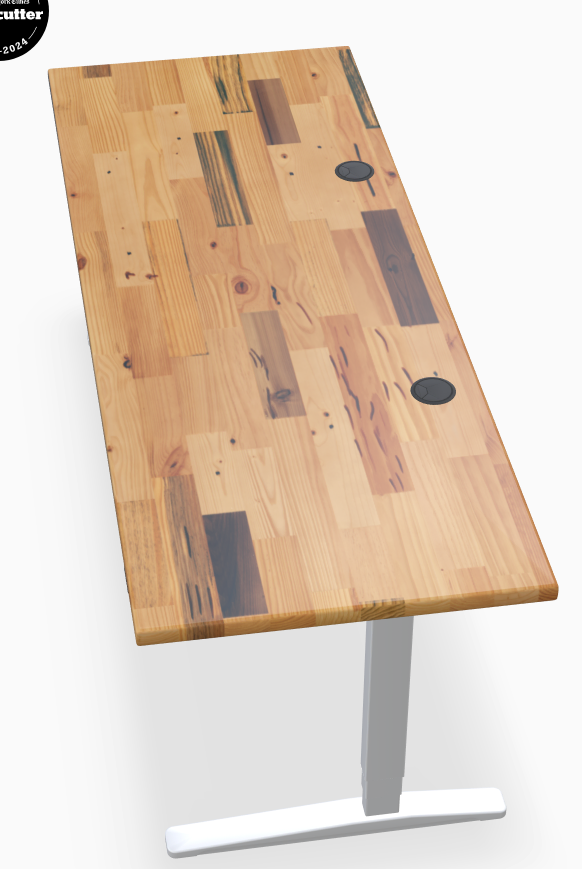
For the space my desk lives in, light colors fit the environment much better than darker colors, so while most of the tops I’ve seen both on the Uplift site as well as images from actual desks posted to places like Reddit have been attractive, that left the Birch Butcher Block as the best option for what I was going for.
Shipping and Delivery
The options I chose were in stock and listed as same day shipping. I ordered on a Saturday, and the desk was shipped on Monday and delivered on Wednesday. There are a lot of large heavy pieces involved here, and nothing is going to protect an 80x30 block of wood that gets rammed by a forklift, but the packaging was exceptionally robust, and everything arrived free of any sort of damage. Parts like the file cabinet were double-boxed in very heavy packaging. The desktop itself has a heavy layer of dense rubber around the perimeter held in place with very heavy cardboard as well.
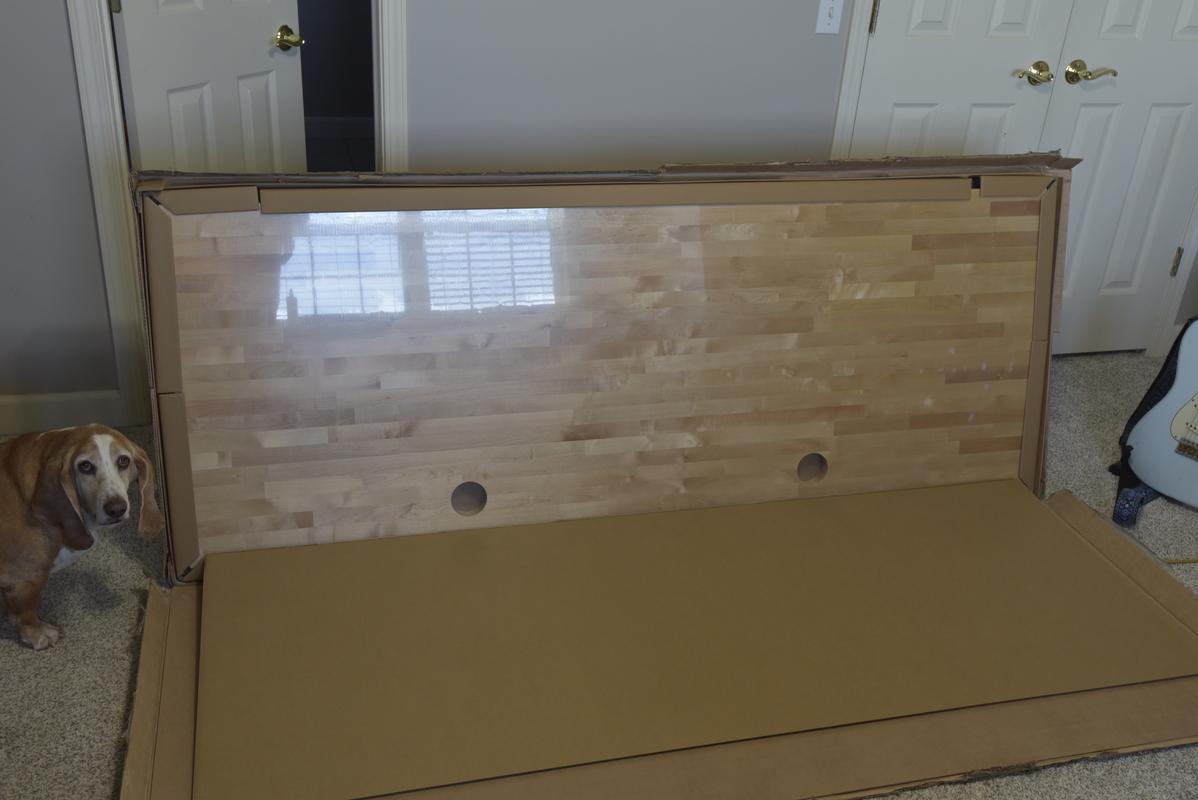
Desktop surrounded by sturdy packing material (and Lucy the Basset Hound)
Assembly
Uplift shows a desk being assembled in seven minutes, of course by someone who isn’t needing to read the instructions as he goes. It took me just over an hour to assemble the desk itself into working order, without a great work surface for the task. A couple of steps were awkward due to the lack of a good table to do the assembly on, but nothing was especially tricky. Assembling the filing cabinet, attaching the monitor arms and monitors, routing and connecting cables, etc., took probably another 90 minutes. I still have some tidying of my cables to do.
Wiring
On the subject of wiring, one of the problems you have to solve with this type of desk is how you’re going to manage the variable distance between all your components and the PC that they’re connecting to. My solution was really two things. First, I ordered longer cables for anything that isn’t USB. I bought two 10-foot DisplayPort cables and standard power cables to run from my monitors to the PC. This lets me route the cables neatly through the bits that are most visible without needing to worry about taking the most direct route so that the cables can still reach when the desk is in standing position.
For everything else, I bought an Anker 10-port USB-A hub and used velcro to attach it to the underside of the desktop. The cables for my keyboard, mouse, gamepad, audio interface, scanner, etc. all then route a standard-length USB cable through the grommet on the desktop into the USB hub, and I need only one USB-A to USB-B cable from the hub to a USB port on my PC. If I had any high bandwidth devices like external hard drives to worry about, I would probably have run them straight to the PC, but for my needs, this is a neat solution to most of my cabling problems.
Overall Assessment
I’ve been using the desk for about a week now, and I’m pleased with the setup. Even at standing height of about 42", the desk is quite stable. I’m a pretty heavy typist, and I can occasionally generate a very small amount of wobble in the monitors, but it’s very slight, and normal typing doesn’t really create any movement. I’ve been switching between sitting and standing presets a few times a day, and adjusting the desk is quiet and smooth.
There are a couple of minor quibbles. The pop-up power grommet is quite deep underneath the desktop. The bottom of the housing itself extends 6" below the bottom surface of the desk, and the power cable drops straight down from there, so you need 8-9" of clearance below the desk in order for it to work. This is generally not a problem, but it can definitely limit anything you might want under the desk.
The two-drawer file cabinet just barely works under the desk on the same side as the power grommet. If I were to push it further back towards the back of the desk and lower the desk to a sitting height appropriate for someone smaller than me, the power grommet would interfere with the file cabinet. There’s maybe an inch between the back of the file cabinet and where the power grommet sits, and Even on the 80" and 72" desks (they share the same frame width) and putting the file cabinet flush against the inside of the frame, the grommet is just far enough toward the side of the desk (by about half an inch) that it would hit the file cabinet if the desk were lowered on top of it.
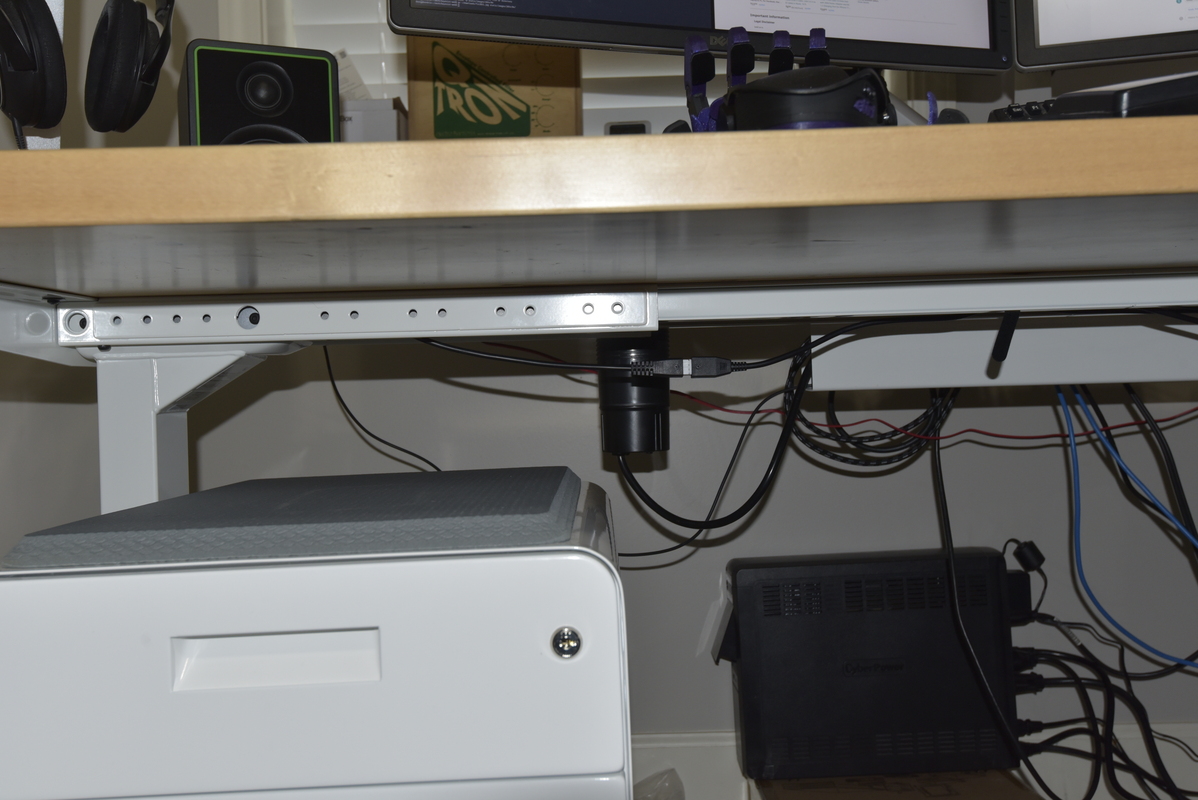
Power grommet can interfere with file cabinet
This means that the only clearance you have is by not pushing the cabinet too far back under the desk. In my case, I’m tall and my sitting height still clears it by an inch or so, so in practice, I won’t have this problem, but others definitely could. There is a narrower version of the file cabinet you could buy that would also resolve the issue, at least on the 72" and 80" frames.
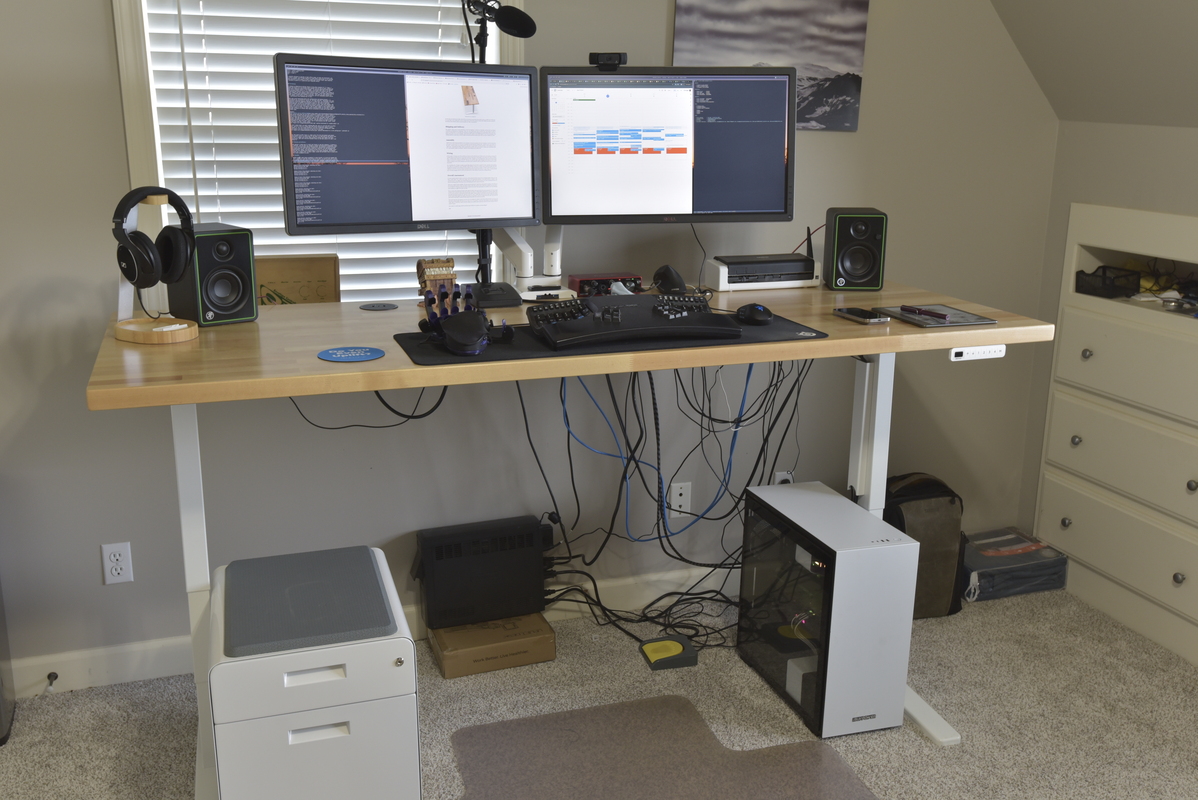
Mostly finished setup (pending some tidying of wiring)
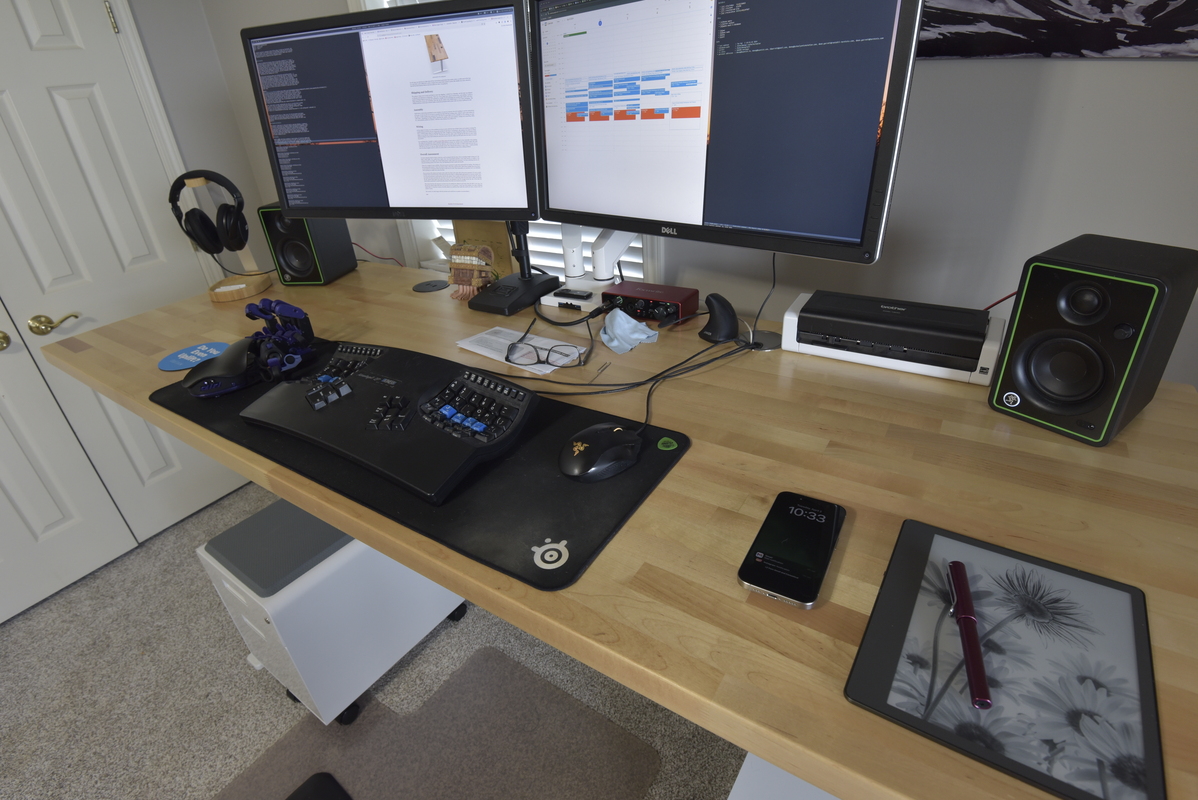
Desktop ready for use
But overall, I’m really happy with the purchase and would have no qualms recommending it.